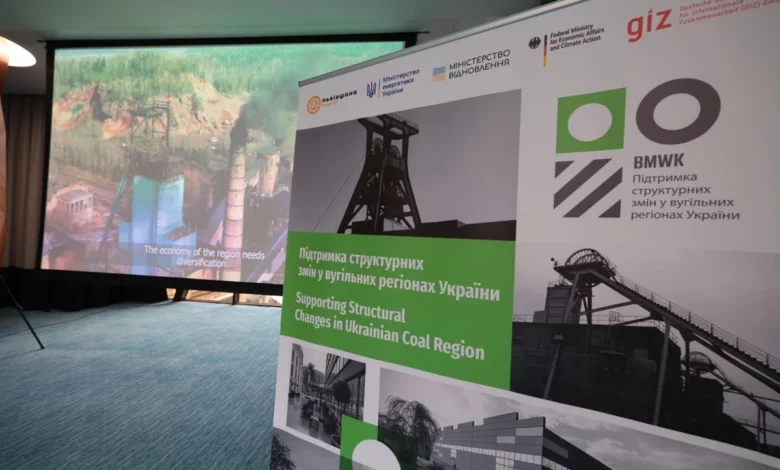
As part of the transformation, the Lviv Region is working on the development of renewable energy.
The process of fair transformation of the Chervonohrad coal microregion is implemented within the framework of the Program “Supporting Structural Changes in the Coal Regions of Ukraine”, implemented by the German Society for International Cooperation (GIZ Ukraine) on behalf of the Federal Ministry of Economy and Climate Protection of Germany.
Thus, the Lviv region is working on the development of renewable energy, although it has significant deposits of traditional hydrocarbons. In particular, more than 41% of the mineral resources of our region are fuel and energy raw materials (oil, free gas, condensate, hard and brown coal, peat).
Deposits of fuel and energy raw materials in the region are unevenly located and have two centers: in the Chervonograd area (hard coal) and Drohobych (oil and gas deposits). There are 700 million tons of coal or 70-90% of all reserves of the Lviv-Volyn basin within the limits of the Chervonograd geological and industrial district. In the Tyaglivskoye and Lubelskoye fields, the total reserves of which are twice the reserves of the active part of the basin and amount to 1.1 billion tons, in the future it would be possible to build another five to eight new mines. 2.5% of the national coal reserves are concentrated here. And this is not to mention the peat reserves in the region, which amount to 128 deposits (67.3 million m³).
“However, we understand the full range of challenges associated with conventional hydrocarbons. First of all, unaccounted emissions of methane into the atmospheric air, which can be traced at all mines of SE “Lvivvugilya”, are harmful to the climate. Also harmful to the atmospheric air, and as a consequence to the climate, is the burning of mined coal. On the territory of the micro-region, the largest polluter of atmospheric air – Dobrotvirska TPP – is also operating,” the Department of Economic Policy of Lviv Regional Government informed.
Therefore, in the Strategy of the Lviv region until 2027, the development of renewable energy sources was fixed as a priority. In particular, one of the priorities is the improvement of energy efficiency and the use of energy from renewable sources.
Yes, bioenergy is one of the priorities of the smart specialization of the region. Also, a strategic task was set to increase the share of energy produced from renewable sources from 5% in 2019 to 15% in 2027. In general, at least 1000 MW of renewable energy should be generated already in 2030.
“In general, we intend to reduce the use of traditional hydrocarbons in the total volume of energy consumption to a mark that will not exceed 50% of the total volume of energy consumption,” the department added.
Today, there are 89 operating renewable energy facilities in the region with a capacity of 388,149 MW. In particular:
– 80 solar power plants (SPP) in all regions of the region, with a total capacity of 349,441 MW. In particular, there are 4 SPPs with a total capacity of more than 11 MW in the Chervonograd district.
– 3 wind power plants (WES) on the territory of Sambir district, with a total capacity of 33.9 MW.
– 4 operational mini hydroelectric power plants (MHP), with a total capacity of 1,765 MW. In particular, in the Chervonograd district, there are 2 MHPs with a total capacity of 1,148 MW.
– CHP on biofuel in the territory of Chervonograd district with an electric capacity of 2.4 MW and a thermal capacity of 7.5 MW.
– 1 biogas power plant on the territory of Lviv district, with a capacity of 0.625 MW.
“Among our priorities, in addition to the development of renewable energy, there is also energy saving,” the department noted.
In 2023, 20 communities implemented projects to improve the energy efficiency of public buildings, including switching to alternative fuels. For the co-financing of such projects, 27.2 million UAH were provided in the regional budget, 40.4 million UAH in local budgets.
Last year, 18 communities took part in the program where energy efficiency improvement projects were implemented. UAH 16.8 million was financed from the regional budget, UAH 20.5 million from the local budget.
As of today, there are 4 wind energy projects with a total capacity of 164 MW and 5 small hydropower projects with a total capacity of more than 5 MW in the region at various stages of implementation. In particular, in the Chervonograd district there is one wind power plant with a capacity of 39.6 MW and one MHP with a total capacity of 0.15 MW.
Also, the following have already been determined in the region:
– 20 free land plots, with a total area of 509.88 hectares, for the possible cultivation of energy crops;
– 84 non-agricultural land plots with a total area of 623.46 hectares that can be used for the construction of renewable energy facilities.
In particular, in the Chervonograd district there are 9 land plots with a total area of 222 hectares, as well as 30-40 hectares of the territories of already closed mines.
“So, as we can see, the Chervonograd coal microregion can become extremely attractive for investments and the development of renewable energy sources that will be able to replace traditional, but environmentally harmful, hydrocarbons,” said Stepan Kuybida, director of LOVA’s economic policy department.

